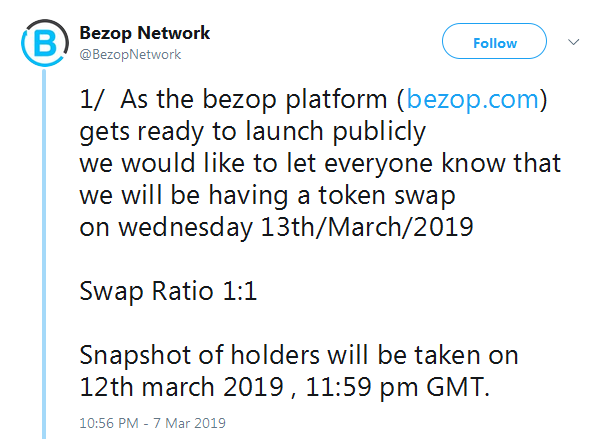

The office of Tehsildar comes into picture in case of small cities, towns etc. It takes years together, as courts are already over burdened. The legal heir has to file the income tax returns for the deceased and pay tax if required. So, if the investments or savings amount is taxable, do the calculations and check if 15H is to be given in those banks where the wife/husband is now becoming an account holder or holding investments. Secondly, there is the death certificate from the municipal authorities. The latter is to be handed over at the burial ground, whose caretaker gives a printed slip in return.
In this state, negative energies can perform various rituals on the asthī and thereby trouble the linga-dēha. These negative energies can also torment relatives of the deceased through the medium of the linga-dēha. That is why, the asthī are collected on the third day from the Raja-Tama predominant environment of the crematorium.

Relatives are beckoned to bid farewell and sing sacred songs at the side of the body. It is a period of mourning observed by Indian people, starting from the day of the death of a particular person, whether male, female or children, to the 13th day after his /her funeral. During teravih death ritual, there are many rules that the family members of the deceased have to observe.
It is because of this, that there is constant purification of the surrounding environment, thereby reducing the possibility of distress caused by negative energies to people accompanying the dead body. The 13th day after death is known as tehravin or the thirteenth. A large scale ceremony is conducted where the death is mourned. The community function is organized for the people of the locality in memory of the dead person. The tehravin is performed at a large scale if the person was popular in the locality or are socially prominent. According to the Hindu death rituals for the father, the body needs to be burnt, and the children are advised to give up consumption of bananas and curd.
Generally, the ritual of pinḍadān is performed in a temple on the banks of a river or a ghāt . Often these are temples of Deity Shiva or those of inferior Deities. This is because, in the premises of their temples, these Deities exercise control over the negative energies. This helps in protecting the linga-dēha from being obstructed during its arrival into the atmosphere of the earth. The hollow of the bamboo stick has sound energy, which moves in a circular manner. The sound waves emitted by this sound energy create subtle flames of fire in the atmosphere.
These Popular Headphones Are Less Than $50 At Walmart
The first part of the body, which is lit, is the face.Unlike other cultures, Hindus believe in keeping the dead body in a casket. In Hindu death rituals, no recording devices are allowed, and the reading source is Mantra. The loss of a father is a highly unacknowledged loss, as people tend to focus on the widow, often neglecting the grieving children.
You must register a death within five days if you are in England, Wales or Northern Ireland and within eight days if you are in Scotland. When someone dies at home and the death is expected, their doctor should be called. If someone dies at home unexpectedly you will need to contact the emergency services.

A will is defined in Section 63 of the Indian Succession Act, 1925. It is a legal document or a kind of declaration of which indicates what a person wants. A will contains the details about the person to whom the assets of the owner shall be transferred.
Śrāddha – annual homage to dead ancestors
Often, when the prān leaves the gross body, the mouth remains open, and through this open mouth, putrefying waves from the dead body spread into the environment. By pouring Gangājal and placing tulsī leaves in the mouth, Sattva waves from the Universe get attracted to these sāttvik objects placed in the mouth. This brings about disintegration of putrefying waves released from the mouth into environment, thus keeping the environment pure.
- The body is either placed in sleeping position or in some Shaivite and tribal traditions is in Padmasana sitting position with legs folded and arms resting on the thigh simulating meditative position.
- The rice balls are to be placed near the dead body, and holy water is expected to be spread over the dead body.
- The will will likely have to be taken to a city office to go through the process of probate—the legal execution of a will, which helps transfer property over to any heirs.
- There’s a huge concept of Moksha in the Hindu death rituals.
- The 13th day after death is known as tehravin or the thirteenth.
This article is an excerpt from Leela, the Path of the Playful, a unique exploration with Sadhguru into the mystical realm of Krishna, which took place at the Isha Yoga Center in September 2005. It is like loose software everywhere, and it always affects adolescent life most. Pitru Paksha is a 16–lunar day period in Hindu calendar when Hindus pay homage to their ancestor , especially through food offerings. The Antyesti ceremonial offerings varies across the spectrum of Hindu society.
Many people believe that shaving the hair also helps to prepare the person regarding what lies ahead. Shaving the head acts as a mark of respect to the deceased and reflects the highest satisfaction. Monday is usually what to do when someone dies at home in india done after the death of an elderly member. It is said that shaving off the hair only helps men to let go of their ego. This culture of hiring a group of women to cry at the funeral service is predominant in Rajasthan.
Family Floater Health Insurance Policy
The mind is just a bunch of information that has natural tendencies which find expression in a certain way. When someone dies, there is no more discernment, no more intellect. If you put one drop of pleasantness into their mind, this pleasantness will multiply a million fold. If you put one drop of unpleasantness, that unpleasantness will multiply a million fold.
The application form to apply for a death certificate is available with the area’s local body authorities and the Registrar who maintains the Register of Deaths. Several doctors refused to issue the death certificate, sources close to the family said. A doctor in Bhowanipore allegedly demanded Rs 800 but the victim’s relative who approached him was not carrying enough cash. Family members perform rituals at a crematorium for a person who died of the coronavirus in India.
Otherwise, as it happens in modern societies, it will affect your physical and mental structure. You see in the world today how much upheaval people are going through during adolescence. The reason why traditionally, we always said that if someone dies, you must burn the body within an hour-and-a-half or a maximum of four hours is because life tries to get back. If someone very dear to you died, your mind may start playing tricks, thinking that maybe a miracle will happen, maybe God will come and bring them back. It has never happened to anyone, but still the mind plays up because of the emotions that you have for that particular person.
Whenever there is a death in the family, why is an earthen lamp lit in the house and what should be its direction ?
If the family can’t assemble within that timeframe the body is put on ice, no embalming. Once the family is gathered they hold an ancient ceremony to honor and morn the loved one. Meanwhile, a platform is built out of wood and after the ceremony the shrouded and washed body is placed on the platform and burned. The burning takes about two hours and family members are in attendance during the cremation. The ashes are then scattered, and for those who can afford it, sprinkled with water from the Ganges or a tributary of the holly river.
This is the time for any special religious, ethnic, or cultural customs that are performed soon after death. Hindus and Sikhs will dispose of the remaining ashes in a river. The time after the death or passing away of a person in India is given a lot of importance. As per the Hindu Holy Scripture like the Bhagwat Gita, it is believed that the soul of the person who has just passed away is on its way to the next level of existence at such a time. As such, it is with an intention to help the departed soul in a peaceful crossover to that next level of his /her existence, that Indians observe so many death rites and rituals. During that time, there are things you can do for that life.
According to Hindu funeral customs there is usually an open casket and guests are expected to view it. You should do so quietly and respectfully, and without touching the person who has died. A viewing will normally take place before a Hindu cremation, but since the cremation typically happens within 24 hours after death, they are usually brief. The kartā should make a sankalp for the benefit of the deceased and donate food-grains and perfom dasha-dāns . Shrāddhas such as Ekoddishta shrāddha, Vasugan shrāddha and Rudragan shrāddha should be performed outside the house, in a cowshed or elsewhere.
The process of pension name transfer is decentralised to the respective banks. Getting online access to the bank account is another process. This simplifies a lot of things, including accessing his latest income tax (I-T) return, which in turn gives a lot of status update.
Rituals after death as per Hinduism
But the death certificate and legal heirship are the starting points. Check if the insurance has been taken through an agent or from the company directly. Many companies have online services, so you could check through that.
They gather for a meal, and the priest lights an incense stick. The funeral, as suggested, should be completed within the next dawn and dusk. The priest is called to help with the decision-making process and directs the Hindu-friendly funeral process. During the Hindu funeral, a comprehensive set of regulations is followed. Once the death occurs, those around are advised not to touch the body because it is considered impure. According to India’s culture, the cycle of life, birth, and death occur once one gets Moksha or liberation.
